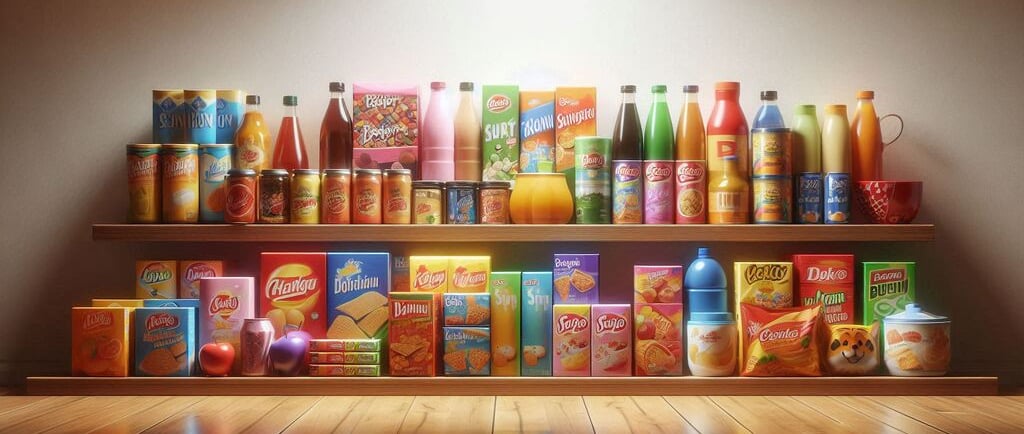Let us collaborate to foster global growth and development together.
Consumer Goods
Learn everything about consumer goods: their categories, trends, and how they shape our daily lives. Explore smart consumer tips for better decisions.
11/16/20073 min read


Learn everything about consumer goods: their categories, trends, and how they shape our daily lives. Explore smart consumer tips for better decisions.
Consumer Goods: What They Are and Why They Matter
Consumer goods form the backbone of modern life, influencing how we shop, live, and interact with products every day. These goods include the items you find on store shelves, from food to electronics. Understanding this essential industry not only helps you as a shopper but also provides insights into market trends, innovation, and global commerce.
Whether you're an everyday consumer or someone keen on economics and retail trends, there’s plenty to discover about consumer goods.
What Are Consumer Goods?
Consumer goods are tangible products purchased by individuals for personal use rather than for business purposes. They span every aisle of a store—from a loaf of bread to a smartphone, covering essential and luxury categories. The overarching goal of consumer goods is to meet our everyday needs and desires.
Categories of Consumer Goods
Consumer goods fall into three main categories:
Durable Goods:
Designed for long-term use and often require a significant investment.
Examples: Appliances, furniture, automobiles.
Non-Durable Goods:
Short-lived products that are consumed quickly.
Examples: Groceries, toiletries, clothing.
Services or Experiences:
Though technically intangible, certain services—such as online subscriptions or wellness experiences—are consumer-focused and contribute to this sector.
Each of these categories plays a unique role in the economy, influencing how businesses produce and market goods.
Key Trends Shaping the Consumer Goods Industry
As times change, so do the needs of shoppers. Businesses must adapt to new trends, technology, and market behaviors to thrive. Here's what's driving the consumer goods market today:
1. Sustainability Is Key
Modern shoppers are making eco-conscious choices. Whether it’s reusable packaging or products made from recycled materials, sustainability sells. Businesses that prioritize green manufacturing gain favor with environmentally conscious consumers.
2. E-Commerce Is Dominating
The shift to online shopping has transformed how we interact with products. From buying groceries via apps to exploring global retailers, consumers now demand convenience and variety at the click of a button.
3. Personalized Products
Today’s consumers want more than just a generic experience. Brands that offer personalization—think tailored skincare regimens or monogrammed items—capture loyalty by adding unique value.
By staying aware of these trends, you can make smarter buying decisions and even anticipate what will hit shelves next.
How Consumer Goods Impact Everyday Life
From waking up to brushing your teeth with toothpaste, to ending your day with a cup of herbal tea, consumer goods are intertwined with every aspect of life. This influence extends to:
Convenience
Products like ready-to-eat meals or subscription delivery boxes are designed to save you time and effort, catering to fast-paced modern lifestyles. These are prime examples of how non-durable goods evolve to meet our immediate needs.
Economy
The production, marketing, and sale of consumer goods create millions of jobs globally and fuel local economies. Whether you’re a retailer or manufacturer, the supply chain keeps multiple industries afloat.
Quality of Life
Innovative goods—smartphones, ergonomic furniture, sustainable clothing—don’t just solve problems; they also elevate comfort and connectivity, enabling you to enjoy your days to the fullest.
Tips for Smart Consumer Decisions
Being an informed shopper goes a long way in ensuring you get quality while also aligning with your values and budget. Here’s how you can master your purchasing power:
Read Reviews: Before buying a product, check out online reviews to understand its real-life performance. Sites like Trustpilot or Google Reviews are great for honest feedback.
Compare Options: Never settle for the first price you see. Use tools like price comparison websites or shopping apps to find the best deals.
Evaluate Quality vs. Price: Remember, the cheapest option isn’t always the best. Factor in durability and brand reputation to ensure you get true value.
Look for Eco-Friendly Labels: Opt for products with certifications like "Energy Star," "USDA Organic," or "Fair Trade" to make ethical purchasing decisions.
Support Local Businesses: Whenever possible, purchase from local brands or sellers. This helps stimulate regional economies and often ensures fresher, more sustainable options.
The Future of Consumer Goods
As technology and awareness expand, the future of consumer goods is shaping up to be even more exciting. Innovations such as AI-enhanced customer experiences, smart home products, and greener packaging will redefine how we buy and use items.
For shoppers, this means:
Access to intelligent systems that guide you toward purchases based on preferences.
Brands offering more transparency about sourcing and manufacturing.
A world of convenience and customization designed to fit seamlessly into your lifestyle.
Whether it’s household staples or the latest gadgets, the future is bright for both businesses and consumers as they embrace progress together.
Conclusion: The Importance of Being an Informed Consumer
Understanding consumer goods empowers you to make wiser choices, not just for yourself but for the planet and economy. These goods are the lifeblood of commerce and an integral part of your daily life. The next time you shop, take a moment to consider how each purchase aligns with your values, needs, and future goals.
Ready to discover more tips and trends in the consumer goods industry? Explore our related articles and leave a comment with your favorite consumer hacks!
Innovation
Cutting-edge solutions for industrial efficiency and productivity.
© 2024. All rights reserved.


